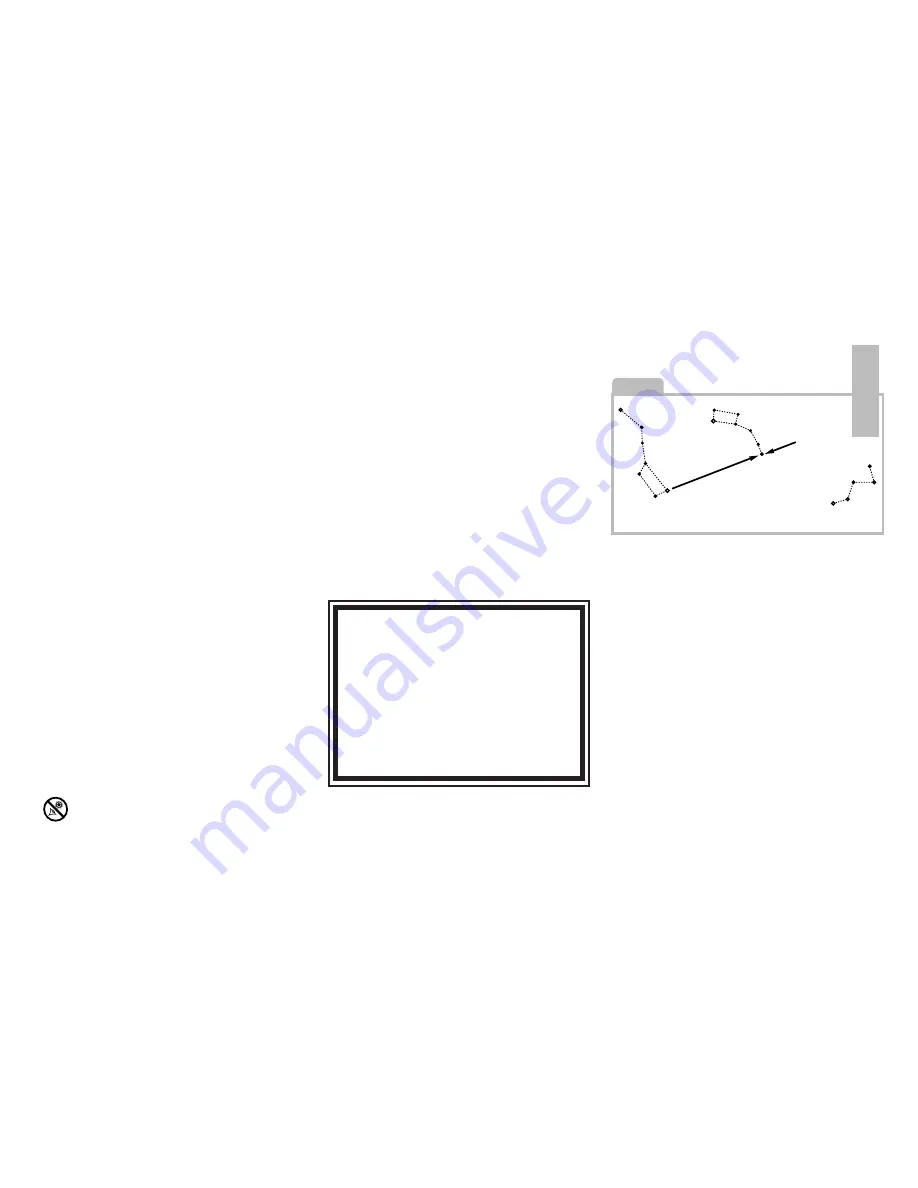
constellations of Orion, Virgo, and Aquarius)
is said to have a Declination of zero, shown
as 0° 0’ 0”.
All celestial objects therefore may be located
with their celestial coordinates of Right
Ascension and Declination.
LINING UP WITH THE CELESTIAL POLE
Objects in the sky appear to revolve around
the celestial pole. (Actually, celestial objects
are essentially “fixed” and their apparent
motion is caused by Earth’s rotation). During
any 24 hour period, stars make one complete
revolution about the pole, circling with the
pole at the center. By lining up the telescope’s
polar axis with the North Celestial Pole (or
for observers located in Earth’s Southern
Hemisphere with the South Celestial Pole),
astronomical objects may be followed, or
“tracked,” by moving the telescope about one
axis, the polar axis.
If the telescope is reasonably well aligned
with the pole very little use of the telescope’s
Declination flexible cable control is necessary.
Virtually all of the required telescope tracking
will be in Right Ascension. For the purposes
of casual visual telescopic observations,
lining up the telescope’s polar axis to within
a degree or two of the pole is more than
sufficient: with this level of pointing accuracy,
the telescope can track accurately by slowly
turning the telescope’s R.A. flexible cable
control and keep objects in the telescopic
field of view for perhaps 20 to 30 minutes.
POLAR ALIGNMENT OF THE EQUATORIAL
MOUNT
To line up the Meade Polaris German
TOO MUCH POWER?
Can you ever have too much power? If the type of
power you’re referring to is eyepiece magnification,
yes you can! The most common mistake of the
beginning observer is to “overpower” a telescope
by using high magnifications which the telescope’s
aperture and atmospheric conditions cannot
reasonably support. Keep in mind that a smaller,
but bright and well-resolved image is far superior
to one that is larger, but dim and poorly resolved.
Powers above 400x should be employed only under
the steadiest atmospheric conditions.
Equatorial mount with the celestial pole,
follow this procedure:
1. Slightly loosen the Azimuth lock (30) of the
Azimuth base, so that the entire telescope-
with-mounting may be rotated in a horizontal
direction. Rotate the telescope until it points
due North. Use a compass or locate Polaris,
the North Star, as an accurate reference to
North (See Fig. 8).
2. Level the mount with the horizon, if
necessary, by adjusting the heights of the
three tripod legs.
3. Determine the latitude of your observing
location by checking a road map or atlas.
Release the latitude lock (9) and tilt the
telescope mount so that the star “Polaris”
Fig. 8
Polaris
Little Dipper
Big Dipper
Cassiopeia
Looking at or near the
Sun
will cause
irreversable
damage to your eye. Do not point this telescope at or near the Sun. Do not look through the telescope as it is moving.
9


























